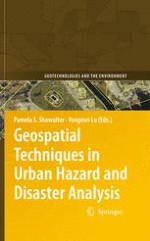2010 | OriginalPaper | Chapter
5. Using Geographic Information Science to Estimate Vulnerable Urban Populations for Flood Hazard and Risk Assessment in New York City
Authors : Juliana Maantay, Andrew Maroko, Gretchen Culp
Published in: Geospatial Techniques in Urban Hazard and Disaster Analysis
Publisher: Springer Netherlands
Activate our intelligent search to find suitable subject content or patents.
Select sections of text to find matching patents with Artificial Intelligence. powered by
Select sections of text to find additional relevant content using AI-assisted search. powered by
